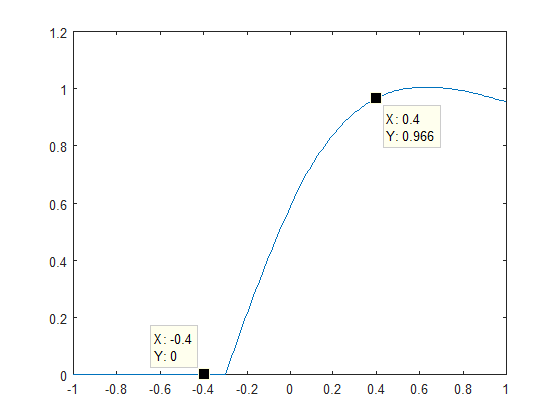Simple question: Is Saleh model small signal/large signal?
时间:04-04
整理:3721RD
点击:
I would like to model the static nonlinearity of a power amplifier.
The ("small" signal) input is positive and negative at the operating point. So if I just use the tanh function I thought to get a good realistic approximation of saturation (for both, positive and negative values). However, being an odd-symmetric function, tanh only generates odd-order harmonics. But I need my non-linearity to generate even order distortion as well!
Then I looked into typical models such as Saleh and Rapp and they always plot the AM/AM curve for [b]positive[b] values and start at 0, e.g.:
http://www-rohan.sdsu.edu/doc/matlab...f/saleh_pl.gif
But what if the the input voltage is negative?
Or maybe I'm confused and these models are supposed to be large signal models as opposed to a small signal model where only positive values are valid?
If this is the case, I am supposed to "bias" my operating point somewhere along the AM/AM curve?
E.g. for the plot above, if my input signal has a swing of 0.8Vpp, would I "bias" it at 0.4V and emulate the small signal behavior by just adding 0.4 to the input signal?
But then two questions:
1.) It would be very linear for the negative cycle and very non linear for the positive
2.) What if the input amplitude exceeds 0.4V? For the positive cycle it happens what it's intended: saturation behavior, adding distortion. But for the negative cycle? The curve is not defined for Vin<0. If I would just (hard)clip it, this would be unphysical.
If it's small signal, I would just "mirror" the model to the negative axis, but then it's again an odd-symmetric function not generating even order harmonics (as for the tanh function)...
(It is what I described: I used the Saleh model but it"s clipped for negative values; then I shifted the input by 0.3. Assuming the maximum input amplitude is 0.4V it would be on most of the time (generating distortion for high instantanous values) and off for a short amount of time, resulting in Class AB behavior).
The ("small" signal) input is positive and negative at the operating point. So if I just use the tanh function I thought to get a good realistic approximation of saturation (for both, positive and negative values). However, being an odd-symmetric function, tanh only generates odd-order harmonics. But I need my non-linearity to generate even order distortion as well!
Then I looked into typical models such as Saleh and Rapp and they always plot the AM/AM curve for [b]positive[b] values and start at 0, e.g.:
http://www-rohan.sdsu.edu/doc/matlab...f/saleh_pl.gif
But what if the the input voltage is negative?
Or maybe I'm confused and these models are supposed to be large signal models as opposed to a small signal model where only positive values are valid?
If this is the case, I am supposed to "bias" my operating point somewhere along the AM/AM curve?
E.g. for the plot above, if my input signal has a swing of 0.8Vpp, would I "bias" it at 0.4V and emulate the small signal behavior by just adding 0.4 to the input signal?
But then two questions:
1.) It would be very linear for the negative cycle and very non linear for the positive
2.) What if the input amplitude exceeds 0.4V? For the positive cycle it happens what it's intended: saturation behavior, adding distortion. But for the negative cycle? The curve is not defined for Vin<0. If I would just (hard)clip it, this would be unphysical.
If it's small signal, I would just "mirror" the model to the negative axis, but then it's again an odd-symmetric function not generating even order harmonics (as for the tanh function)...
Obviuosly, the voltage quantity in the curve is AC magnitude rather than instantaneous value. And of course it describes large signal behavior.
Thanks. So would this be then a reasonable small signal model at RF (static nonlinearity only!) for a Class AB power amplifier?

(It is what I described: I used the Saleh model but it"s clipped for negative values; then I shifted the input by 0.3. Assuming the maximum input amplitude is 0.4V it would be on most of the time (generating distortion for high instantanous values) and off for a short amount of time, resulting in Class AB behavior).
Can I come back again to this answer? Is there a simple way to convert AC magnitude to instantaneous value?
Specifically, I would like to use the model on a modulated RF signal rather than a baseband signal.
I do not want to downmodulate/upmodulate or extract/restore envelope amplitude/phase information.
Thank you!
